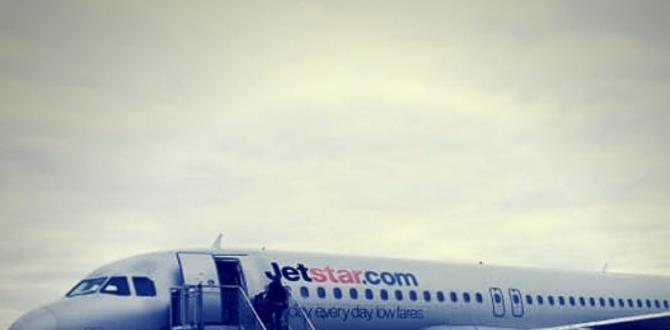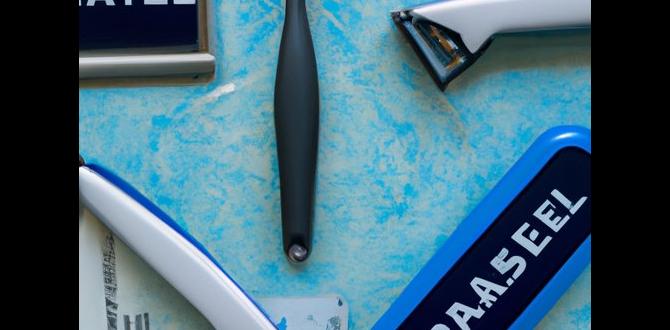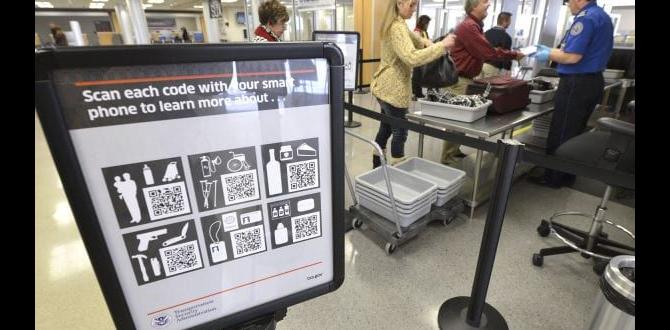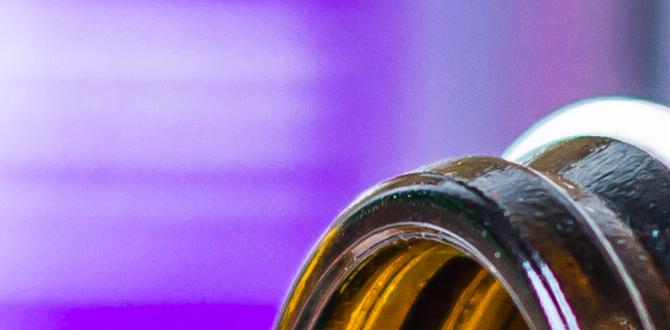In the realm of air travel, regulatory bodies such as the Transportation Security Administration (TSA) implement stringent guidelines to ensure the safety and security of passengers. Among these regulations are specific restrictions on items deemed hazardous, which consequently cannot be carried aboard an aircraft. Understanding the comprehensive list of what you can’t take on a plane is crucial for travelers aiming to navigate security checkpoints smoothly and avoid unnecessary delays or confiscations.
As we delve into the labyrinth of forbidden items, some of the prohibited objects might surprise you, piquing your curiosity to uncover the rationale behind these restrictions.
5 Surprising Items You Can’T Take On A Plane

understanding tsa regulations
– overview of the transportation security administration (tsa) guidelines – recent updates to travel regulations
Figuring out what you can pack for your flight can feel like trying to solve a puzzle with missing pieces, especially with all the rules from the Transportation Security Administration (TSA). The TSA is like the rule-maker for airport security, deciding what’s okay and not okay to bring on a plane. They have a list of do’s and don’ts to keep everyone safe in the skies.
Recently, they’ve even updated some rules, making it a tad easier to remember what stays home and what flies with you.
To keep things light and avoid any pre-flight panic, here’s a quick guide on the essentials:
| Item | Can You Bring It? |
|---|---|
| Liquids over 4 ounces | Nope |
| Small scissors | Yes, but less than 4 inches |
| Full-size candy bars | Yes, but your dentist might not be happy |
| Battery packs | Yes, but in carry-on only |
So, next time you pack, think of the TSA as your travel buddy who’s just a bit strict about the rules.
And remember, the only thing explosive about your trip should be the fun you’re planning to have!
prohibited items in carry-on and checked bags
– detailed list of items banned from carry-ons – comprehensive overview of what cannot be packed in checked luggage
Traveling by plane means following strict rules about what you can’t bring. For safety, many items are not allowed in either carry-on bags or checked luggage. Here’s a quick guide to help you pack:
In Carry-on Bags:
- Sharp Objects: Scissors (longer than 4 inches), knives, and razors are a no-go.
- Large Liquids: Containers over
4 ounces (100 milliliters) must be checked, except for medications and baby food.
- Flammable Items: Lighters, aerosols, and fuels can’t travel with you in the cabin.
In Checked Luggage:
- Batteries: Spare lithium batteries are only allowed in carry-on, not in checked bags.
- Explosives: Fireworks, flares, and other explosives are entirely banned from all luggage.
- Potent Chemicals: Bleach, pesticides, and toxic substances have no place in your checked bags.
Remember, this list isn’t exhaustive. For a smooth journey, checking your airline’s website for their specific rules is always best.
liquids, aerosols, and gels: the 3-1-1 rule
– explanation of the tsa’s 3-1-1 liquids rule for carry-ons – tips on packing liquids in checked baggage
Traveling by air means knowing the rules for what you can pack. The TSA’s 3-1-1 rule for carry-on luggage is simple. It means you can only take liquids, aerosols, and gels in containers that hold
4 ounces (100 milliliters) or less per item. Pack these in a single, clear, quart-sized bag. Each passenger is allowed one bag each. Here are some tips to make packing easier:
- Choose travel-sized containers for your liquids to comply with the 3-1-1 rule.
- Check larger items. If you need to bring more than 4 ounces of any liquid, aerosol, or gel, pack it in your checked luggage.
- Buy essentials at your destination to save space in your luggage and comply with the rule.
This ensures a smoother security check and helps you avoid having to throw away items that don’t meet the guidelines.
sharp objects and tools: navigating the gray areas
– list of sharp items and tools disallowed in carry-on bags – guidelines for packing sharp objects in checked luggage
Traveling by plane means following specific rules, especially regarding what you can pack. For sharp objects and tools, it’s essential to know what goes in your carry-on and what must be checked. Items like box cutters, ice picks, and large scissors should be placed in checked luggage. However, small scissors with blades shorter than 4 inches might be allowed in your carry-on.
Always double-check the airline’s policy to avoid surprises at security. When packing sharp tools in checked bags, ensure they’re securely wrapped to prevent injury to baggage handlers and inspectors.
electronics and batteries: powering through security
– restrictions on electronic devices and power banks in carry-ons – rules for transporting electronics in checked baggageAir travel today isn’t just about packing your toothbrush and a good book. Keeping your gadgets powered up and ready to go is a must, but there’s a twist! Not all electronics and batteries get a VIP pass through security. So, before you throw that giant power bank into your carry-on, hoping to binge-watch your favorite show at 30,000 feet, let’s ensure it won’t get snagged at security.
First off, if your gadget has batteries, especially lithium-ion, airlines have rules. Carry-on is the way to go for these power sources. Why?
In the rare event they decide to throw a tantrum (a. k. a. overheat), the crew can deal with it.
But remember, there’s a size limit—batteries over 100 watt-hours might need the airline’s nod of approval. And for the love of gadgetry, keep them away from coins, keys, or anything that might start a mini fireworks show in your bag.
But what if you’re checking in your bag? Breathe easy, most of your electronic buddies can hitch a ride here too. Just ensure they’re powered off (not just sleeping) and packed securely to avoid an accidental switch-on or breakdance session inside your suitcase. Though remember, those hefty power banks are still a no-go in checked baggage.
| Item | Carry-On | Checked Baggage |
|---|---|---|
| Lithium Batteries (<100Wh) | Yes | Yes (with restrictions) |
| Power Banks | Yes | No |
| Electronic Devices | Yes (powered off) | Yes (powered off) |
Remember, before you pack, a quick check of the latest rules from your airline or TSA can save you from heartache. And imagine the stories you’ll tell about the day your suitcase almost became a roadside firework stand!
sporting goods, firearms, and self-defense items
– regulations surrounding sports equipment and firearms – what you need to know about carrying self-defense itemsImagine packing your bags for a thrilling adventure, a vacation full of sports, or maybe you’re just someone who feels safer carrying a self-defense item. Well, before you zip that suitcase shut, let’s chat about what’s a big no-no to bring aboard an airplane. We’re not talking about liquids over 4 ounces or your favorite jam; we’re diving into the realm of sporting goods, firearms, and those nifty self-defense gadgets.
It’s like the airport security folks are saying, “We appreciate your enthusiasm for sports and safety, but let’s keep the skies friendly, okay?” So, if you’ve got a baseball bat for hitting home runs, a firearm for sport, or pepper spray for peace of mind, you might need to think again. These items have strict rules because, well, safety dances to its tune in the sky.
| Sporting Goods | Firearms | Self-Defense Items |
|---|---|---|
| Bats, bows, arrows | Rifles, guns (unloaded and in checked baggage) | Pepper spray (with restrictions), martial arts equipment |
| Golf clubs, ski poles | Ammunition (in secure packaging) | Brass knuckles, stun guns |
See, it’s all about keeping everyone floating among the clouds safe and sound. But don’t let this list rain on your parade. There are ways to bring these items, like checking them in or following specific guidelines for firearms and self-defense tools.
Just remember, smiling at the airport staff won’t bend the rules, but it might make the process friendlier. So, pack smart, and you’ll be ready for takeoff without any hitches. And who knows?
The adventure that awaits might not even need that superhero cape or magic wand you were thinking of packing!
food, alcohol, and tobacco: traveling with consumables
– overview of tsa rules on transporting food and beverages – guidelines for flying with alcohol and tobacco products
Traveling by plane means following specific rules, especially when it comes to food, alcohol, and tobacco. The Transportation Security Administration (TSA) sets guidelines to ensure everyone’s safety and comfort. Most solid foods are allowed in both carry-on and checked bags, but liquid or gel-like food items must fit within the
4-ounce rule if they’re in your carry-on. Alcohol presents its own set of rules: you can bring bottles under 24% alcohol content with no limit, though airlines might have their own restrictions. For bottles between 24%-70% alcohol, up to five liters are allowed in checked luggage. However, anything over 70% is a no-go.
Tobacco products are generally allowed but check quantity limits to avoid issues. Always pack responsibly, understanding these rules helps smooth your journey.
medication, medical equipment, and special needs
– how to ensure your medications and medical supplies comply with tsa – advice for traveling with medical devices and special needs
Traveling by plane requires knowing what medical items you can bring. TSA rules allow most medications in carry-on bags, but they must be screened separately. It’s wise to have a doctor’s note for prescription meds and any necessary medical equipment.
For those with special needs, alerting the airline ahead of time ensures assistance is available. Equipment like wheelchairs and devices to help with hearing or vision are also allowed but follow specific guidelines for transport and security checks. Keeping these tips in mind helps make flying smoother for everyone involved.
traveling with children and pets
– recommendations for packing children’s items – tsa guidelines for flying with pets and their essentials
Heading to the skies with your mini-me and furry friends could turn into an episode of “Mission: Impossible” if you’re not clued in on what to pack. For kids, think Tetris: pack those snacks and toys in a way that every inch of space is used wisely. Remember, your child’s favorite liquid snack or toy gun might make security do a double-take.
As for pets, it’s like preparing a toddler for a trip but furrier. Their food, leash, and a comforting toy must be tucked in neatly. But here’s the kicker: no full-size water bowls or chew toys that resemble real animals – because, honestly, who needs the extra drama at security?
| Item | Can Bring on Plane? |
|---|---|
| Snacks (for kids) | Yes |
| Toy Guns (for kids) | No |
| Liquid Snacks (for kids) | With Conditions |
| Leash (for pets) | Yes |
| Comfort Toy (for pets) | Yes |
| Full-size Water Bowl (for pets) | No |
So, before you zip up those bags, double-check if you’re about to pack a no-go item. A smooth check-in is way better than a mini heart attack at security!
tips for a hassle-free security check
– best practices for packing your carry-on and checked luggage – strategies for a smooth passage through airport securityPacking for a trip is like playing Tetris with your belongings, but with the added challenge of avoiding the dreaded buzz at airport security. To make sure your journey begins without a hiccup, remember, your shampoo needs to be in a tiny bottle, not the family-sized one you use at home. Also, your favorite snack might be in a can, but unless you plan on using it as a very blunt instrument on your paper, leave it out. Here’s a simple table to clear the confusion:
| Can Take | Can’t Take |
|---|---|
| Mini shampoo bottles (under 4 oz/100 ml) | Full-size liquids or gels |
| Snacks in clear bags | Soupy or saucy foods |
| Portable chargers | Large scissors or pocket knives |
Remember, wearing shoes with too many laces or bringing a bulky jacket can make security slower than a snail on a leisurely stroll. So, wear simple shoes and pack the coat. By following these simple guidelines, you’ll breeze through security, giving you more time to enjoy the wonders of duty-free shopping or a peaceful wait at your gate.
Conclusion
In conclusion, understanding what you can’t take on a plane is crucial for a smooth travel experience. By familiarizing yourself with prohibited items, such as flammable liquids, sharp objects, and certain chemicals, you ensure the safety of not only yourself but also your fellow passengers. Remember to always check the latest guidelines provided by airlines and the TSA before packing for your journey.
FAQs
What Specific Items Are Prohibited From Being Carried In Both Checked And Carry-On Luggage On Flights According To Tsa Regulations?According to the Transportation Security Administration (TSA) regulations, items prohibited from both checked and carry-on luggage include flammable liquids and explosives (e.g., gasoline, fireworks, and certain types of matchboxes), as well as corrosive chemicals (e.g., bleach, battery acid). Firearms, ammunition, and certain types of martial arts weapons (regardless of purpose or intent) are also not allowed in either checked or carry-on luggage unless specific conditions are met for firearms. Additionally, items such as bear spray, hoverboards, and certain lithium batteries are banned due to safety concerns. These restrictions are in place to ensure the safety and security of all passengers and crew aboard aircraft.
Can Passengers Bring Liquids Or Gels In Their Carry-On Luggage, And If So, What Are The Restrictions Concerning Their Size And Packaging?Yes, passengers can bring liquids or gels in their carry-on luggage, but they must adhere to the 3-1-1 liquids rule enforced by most security agencies worldwide. This rule stipulates that all liquids, aerosols, gels, creams, and pastes must be in containers that hold 100 milliliters (3.4 ounces) or less per item. These containers must fit comfortably in one clear, resealable plastic bag with a maximum capacity of one liter (approximately a quart-size bag). Each passenger is allowed one such bag, which must be presented separately from their carry-on baggage during the security screening process.
Are There Any Exceptions To The Tsa Rule For Medications And Baby Food/Formula When Traveling By Plane?Yes, there are exceptions to the TSA rule for medications and baby food/formula. Passengers are allowed to bring medications in pill or liquid form and baby food/formula, breast milk, and juice in reasonable quantities exceeding the usual 3.4 ounces (100 milliliters) limit for liquid. These items must be presented to the TSA officers for inspection at the checkpoint. Passengers are not required to place these items in a plastic bag, but they should declare them to officers before screening begins.
How Do The Rules Differ For Carrying Batteries Or Electronic Devices With Lithium Batteries On Planes?When flying, passengers are generally allowed to bring electronic devices containing lithium batteries (such as laptops, smartphones, and cameras) in their carry-on baggage, but there are stricter rules for checked baggage. Spare lithium batteries (both lithium metal and lithium-ion/polymer), portable power banks, and e-cigarettes must be carried in carry-on baggage only. The limit for lithium metal batteries is up to 2 grams of lithium per battery, and for lithium-ion batteries, the limit is a capacity of 100 watt-hours (Wh) to 160 Wh with airline approval. Additionally, passengers are advised to protect spare batteries from short-circuiting by placing them in original retail packaging or by taping over the terminals and packing them in separate plastic bags.
What Are The Guidelines For Transporting Sharp Objects Or Tools In Checked Luggage Versus Carry-On Bags On Flights?When transporting sharp objects or tools on flights, the guidelines typically allow for these items to be packed in checked luggage provided they are securely wrapped or sheathed to prevent injury to baggage handlers and inspectors. In contrast, carry-on bags generally prohibit sharp objects that could potentially be used as weapons, such as knives (excluding plastic or round-bladed butter knives), box cutters, or large scissors. Any sharp tools that are essential for carry-on, such as small scissors with blades shorter than 4 inches (10 cm), may be allowed following the specific airline’s policy. Passengers are encouraged to check the latest transportation security administration (TSA) or equivalent authority’s regulations and the airline’s guidelines before packing for their flight.
